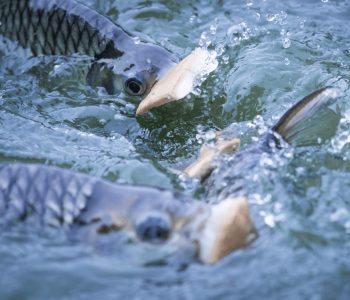Feed additive boosts the health of tilapia raised under intensive conditions. Providing potential benefits in terms of improved health and reduced production costs.
A recent study conducted by researchers from the Federal University of Viçosa and Embrapa revealed that the use of feed additives based on hydrolyzed proteins from poultry liver can improve the health of tilapia raised in intensive systems. This aspect holds significant scientific and economic potential, considering Brazil’s status as a major poultry meat producer, which provides ample raw materials for protein hydrolysate production.
When testing the inclusion of protein hydrolysates in tilapia feed,researchers observed a decrease in the formation of carbonylated proteins in the fish gills. The presence of carbonylated proteins usually indicates cellular damage in living organisms and can act as a biomarker for oxidative protein damage.
The limited presence of carbonylated proteins in fish fed with hydrolyzed proteins from chicken liver suggested that this additive helped prevent and mitigate cellular damage, potentially reducing the risk of animal mortality. Juliana Gomes, from the Laboratory of Applied Physiology to Fish Farming at the Federal University of Viçosa (UFV), explained that oxidative imbalances can lead to decreased feed consumption, slower growth rates, a compromised immune response, and an increased susceptibility to different diseases.
Cellular lesions are common in fish reared intensively in ponds, due to the high stress conditions to which they are exposed. “For instance, during classification handling, they are exposed to air, which leads to a reduction in oxygen uptake through their gills.” Explained Jener Zuanon, a professor at the Department of Animal Biology at UFV.
- Zuanon explains that such stressful situations can result in various metabolic disorders, one of which involves the production of reactive oxygen species that release free radicals, causing damage to the fish’s cells. Interestingly, the same process occurs in humans when we experience stress.
Hamilton Hisano a researcher from Embrapa emphasizes that the use of feed additives can be an effective strategy to help protect tilapia from these health hazards associated with stress.
According to Hisano, feed additives are employed as strategies to enhance feed consumption, improve nutrient utilization efficiency, and increase stress tolerance in intensive management settings. This realization paves the way for innovative nutritional approaches that can optimize fish health and productivity in aquaculture.
Protein hydrolysates, the additives examined in this study, enhance fish resilience and recovery from the effects of management practices involving air exposure in aquaculture Although commonly used as a fishmeal substitute, this ingredient has also been assessed as an additive due to its capability to regulate physiological processes.
The study also emphasizes the economic significance of additives, as fish feed can account for up to 70% of total production costs. Replacing conventional ingredients with more affordable alternatives, like plant-based sources, offers an efficient means to reduce costs.
Furthermore, the research highlights that Brazil, as one of the world’s major chicken meat producers, possesses ample raw materials for protein hydrolysate production. Poultry viscera, including the liver, constitute approximately 37% of the live weight, making this byproduct a sustainable and economically viable option for additive production, as emphasized by Gomes.
Fabiana Dieterich from Falbom Agroindustrial Ltda underscored the importance of this research.
- She states that “the knowledge generated through this type of research demonstrates how the collaboration between public research institutions and industry can play an important role in addressing issues within the production chain.”
This study is part of a collaboration between the Federal University of Viçosa and Embrapa Meio Ambiente, focusing on feed additive research. It is also a part of the BRS Aqua project, which explores various aspects of aquaculture, including tilapia, tambaqui, bijupirá, and marine shrimp. Funding for the project is provided by the National Bank for Economic and Social Development (BNDES), the Special Secretariat, the Ministry of Aquaculture and Fisheries (MPA), and Embrapa itself.
The full article is available at “Animal Feed Science and Technology.”
Source: Embrapa
You may also like to read: “Fish nutrition: General aspects”
